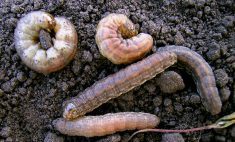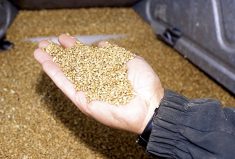A tree needs a healthy head start and that begins with selecting the right seedlings.
“Ask where the stock came from, as many trees are not adapted to Alberta’s harsher climate,” said provincial agroforestry specialist Toso Bozic. “If you don’t get a tree that suits your needs, wait for next season and order in advance.”
Next, take care when transporting trees and shrubs to their new home.
“Don’t leave seedlings for a long time in your vehicle during hot and windy days as their roots dry rapidly,” said Bozic. “Do not expose them to direct sunlight. Cover them or put them in a box. If you must wait one or two hours, cover the seedlings with snow or ice or use a reflective tarp. Do not use canvas, as it holds heat and warms seedlings. Having a canopy on your pickup truck also helps.”
Read Also

Farming Smarter receives financial boost from Alberta government for potato research
Farming Smarter near Lethbridge got a boost to its research equipment, thanks to the Alberta government’s increase in funding for research associations.
Plant trees and shrubs within a few days.
“Don’t wait too long as you may expose them to various diseases, moulding, drying, and many other problems. If you can’t plant them immediately, store them in a cool place for a few days (a cooler or cold storage, root cellar or colder corner of your shed). After a few days, check the roots — if they are dry, spray/mist water and cover them again.”
Only take out the amount of seedlings you can plant that day.
“You can also dip seedlings in water just prior to planting but do not keep them in water for long as you can drown them and cause damage due to oxygen starvation. Poplar and willow cuttings can be soaked in water a day prior to planting.”
- More on the Alberta Farmer: Funding for trees lost to beetles or floods
Planting tips
The best time to plant trees or shrubs is early morning, late afternoon or during a cloudy day.
There are advantages and disadvantages to the two common methods of planting — manual and mechanical.
For hand planting, dig a large enough hole so the roots are straight and plant to the same depth as in the nursery (look for changes in bark colour close to the roots to find the soil line).
“Once you have put the tree properly in the hole, put soil around it and step on the soil to make it firm,” said Bozic. “The easiest way to test is to try to gently pull the trees out — if they come out easily, you have not used enough soil and pressure. Keep seedlings as straight as possible.”
Prepare soil prior to mechanical planting, don’t go too fast, and have someone follow to ensure the trees are properly planted.
Once planting is complete, they need to be watered.
“Don’t water too quickly as water will run off and nothing will get to the roots, or it will create surface roots for trees that may die during a drought,” said Bozic. “The goal is to create trees and shrubs with deep roots that can withstand drought. Check soil moisture regularly by putting a sharp object, such as a knife, into the soil. Do not water if there is some soil on the knife. If the knife comes out dry, you may water.”
Finally, keep a lookout for weeds, diseases, animals and insects.
“Weed control is an ongoing process in the first few years following planting,” said Bozic. “It may require up to five years of controlling. It’s also crucial in the first few years to monitor your trees once a week for any potential damages from insects, diseases and animals.”















